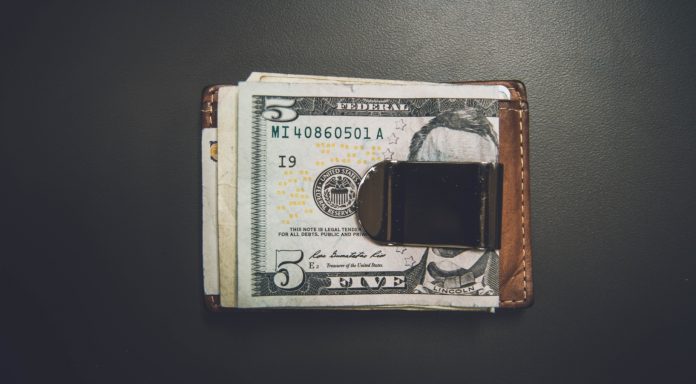The pound rallied to a session high versus the dollar as investors cheered UK Prime Minister Theresa May securing the backing of her Cabinet over the Brexit deal she had negotiated. The pound US dollar exchange rate hit a peak of US$1.3070, before easing back to close just shy of US$1.30.
| What do these figures mean? |
|---|
| When measuring the value of a pair of currencies, one set equals 1 unit and the other shows the current equivalent. As the market moves, the amount will vary from minute to minute.For example, it could be written:1 GBP = 1.28934 USD Here, £1 is equivalent to approximately $1.29. This specifically measures the pound’s worth against the dollar. If the US dollar amount increases in this pairing, it’s positive for the pound. Or, if you were looking at it the other way around:1 USD = 0.77786 GBPIn this example, $1 is equivalent to approximately £0.78. This measures the US dollar’s worth versus the British pound. If the sterling number gets larger, it’s good news for the dollar. |
The pound experienced a very volatile session on Wednesday as jittery investors waited to see whether Theresa May was able to pull her Cabinet behind her to support the Brexit deal. Market participants knew that it was going to be a big challenge and the pound rallied on Theresa May’s achievement. However, this is by no means the end of the process. The pound fell back as investors weighed up the challenges that Theresa May faces in the coming weeks.
Market participants are increasingly concerned that Theresa May could face a vote of no confidence in the coming days as the Eurosceptics in the party looked to express their discontent with the deal. Theresa May herself hinted in her speech that she expected a severe political backlash from Eurosceptics. Any successful political challenge could mean the end of a Brexit deal.
| Why is a “soft” Brexit better for sterling than a “hard” Brexit? |
|---|
| A soft Brexit implies anything less than UK’s complete withdrawal from the EU. For example, it could mean the UK retains some form of membership to the European Union single market in exchange for some free movement of people, i.e. immigration. This is considered more positive than a “hard” Brexit, which is a full severance from the EU. The reason “soft” is considered more pound-friendly is because the economic impact would be lower. If there is less negative impact on the economy, foreign investors will continue to invest in the UK. As investment requires local currency, this increased demand for the pound then boosts its value. |
The meeting has now paved the way for a European Council Special meeting on 25th November. Prime Minister will then face a big political battle to push the plan through parliament. Political analysts expect this to be extremely challenging and could stop the deal in its tracks. So whilst yesterday’s victory is a step in the right direction for a Brexit deal, there is still a long way to go.
US Inflations Misses Expectations
Disappointing inflation data sent the dollar on a lower trajectory on Wednesday. Inflation, as measured by consumer price index increased to 2.5% as analysts had forecast. This is a solid increase from September’s already strong 2.3%. However, investors were more concerned about core inflation, which excludes volatile items such as food and fuel, unexpectedly declining.
Core CPI dipped to 2.1% in October, down from 2.2% in September. Looking at the bigger picture, this slight setback in core inflation, is unlikely to change the Fed’s course of action, as it prepares to hike rates again next month.
| Why does poor economic data drag on a country’s currency? |
|---|
| Slowing economic indicators point to a slowing economy. Weak economies have weaker currencies because institutions look to reduce investments in countries where growth prospects are low and then transfer money to countries with higher growth prospects. These institutions sell out of their investment and the local currency, thus increasing supply of the currency and pushing down the money’s worth. So, when a country or region has poor economic news, the value of the currency tends to fall. |
Today US retail sales will be in focus. Giving the rising wages and strong jobs market, consumers should be spending. Analysts are expecting US retail sales to grow 0.5%, up from a lacklustre 0.1% in September. A strong reading could boost the dollar
This publication is provided for general information purposes only and is not intended to cover every aspect of the topics with which it deals. It is not intended to amount to advice on which you should rely. You must obtain professional or specialist advice before taking, or refraining from, any action on the basis of the content in this publication. The information in this publication does not constitute legal, tax or other professional advice from TransferWise Inc., Currency Live or its affiliates. Prior results do not guarantee a similar outcome. We make no representations, warranties or guarantees, whether express or implied, that the content in the publication is accurate, complete or up to date. Consult our risk warning page for more details.
This article was initially published on TransferWise.com from the same author. The content at Currency Live is the sole opinion of the authors and in no way reflects the views of TransferWise Inc.





